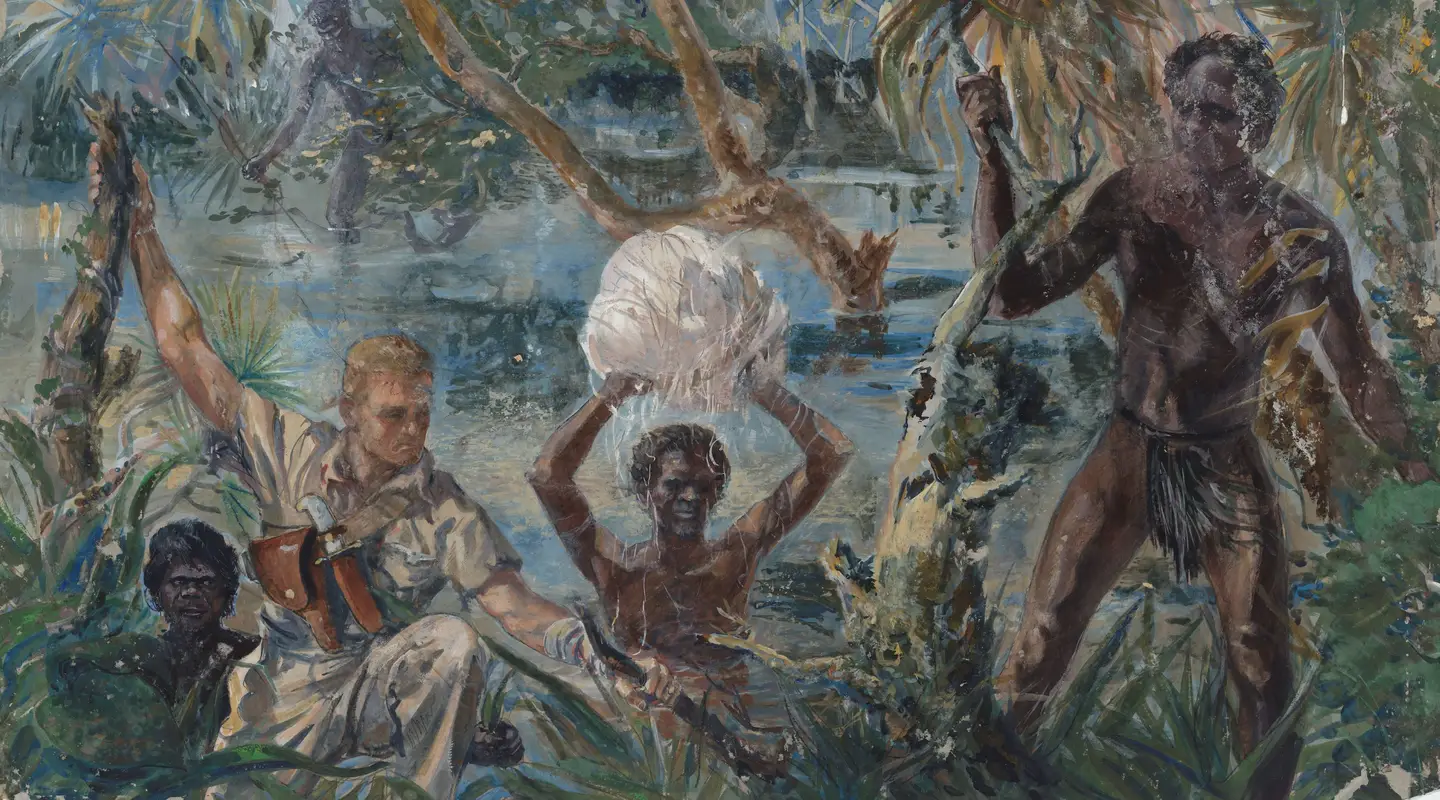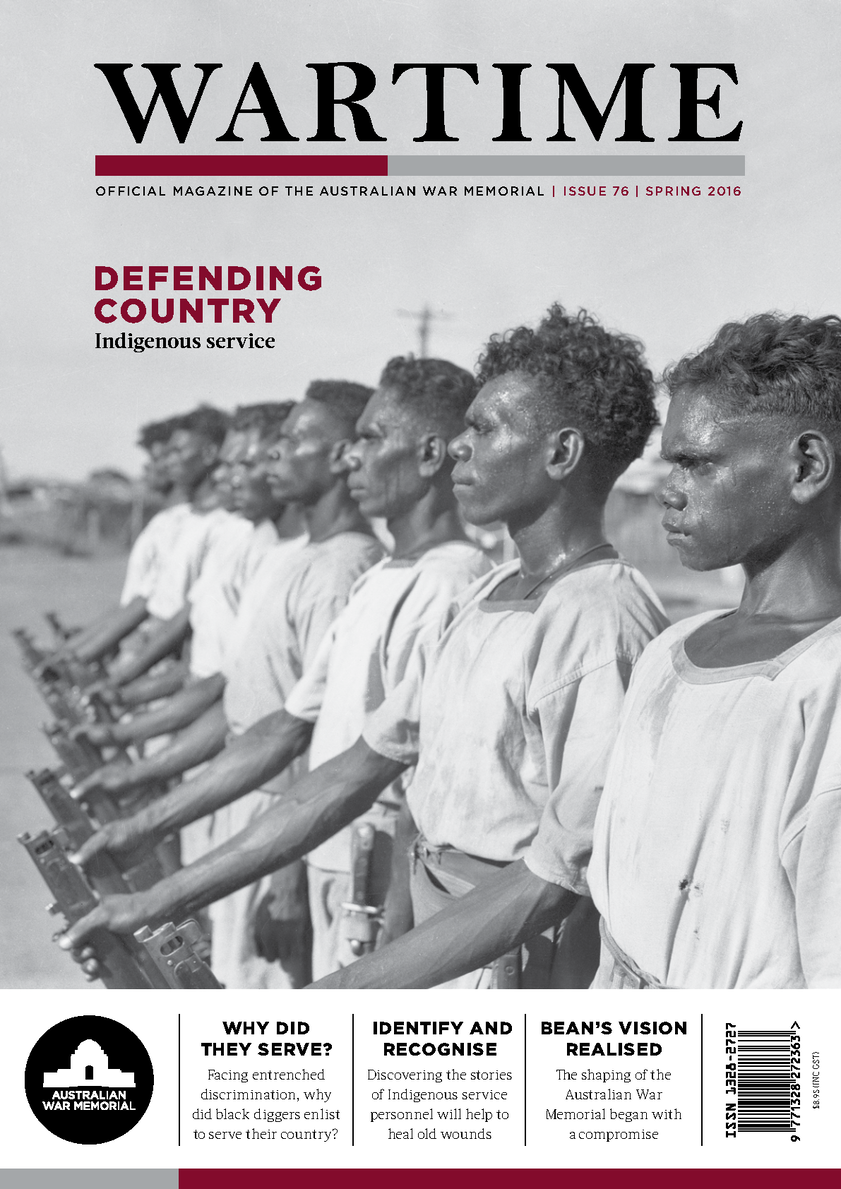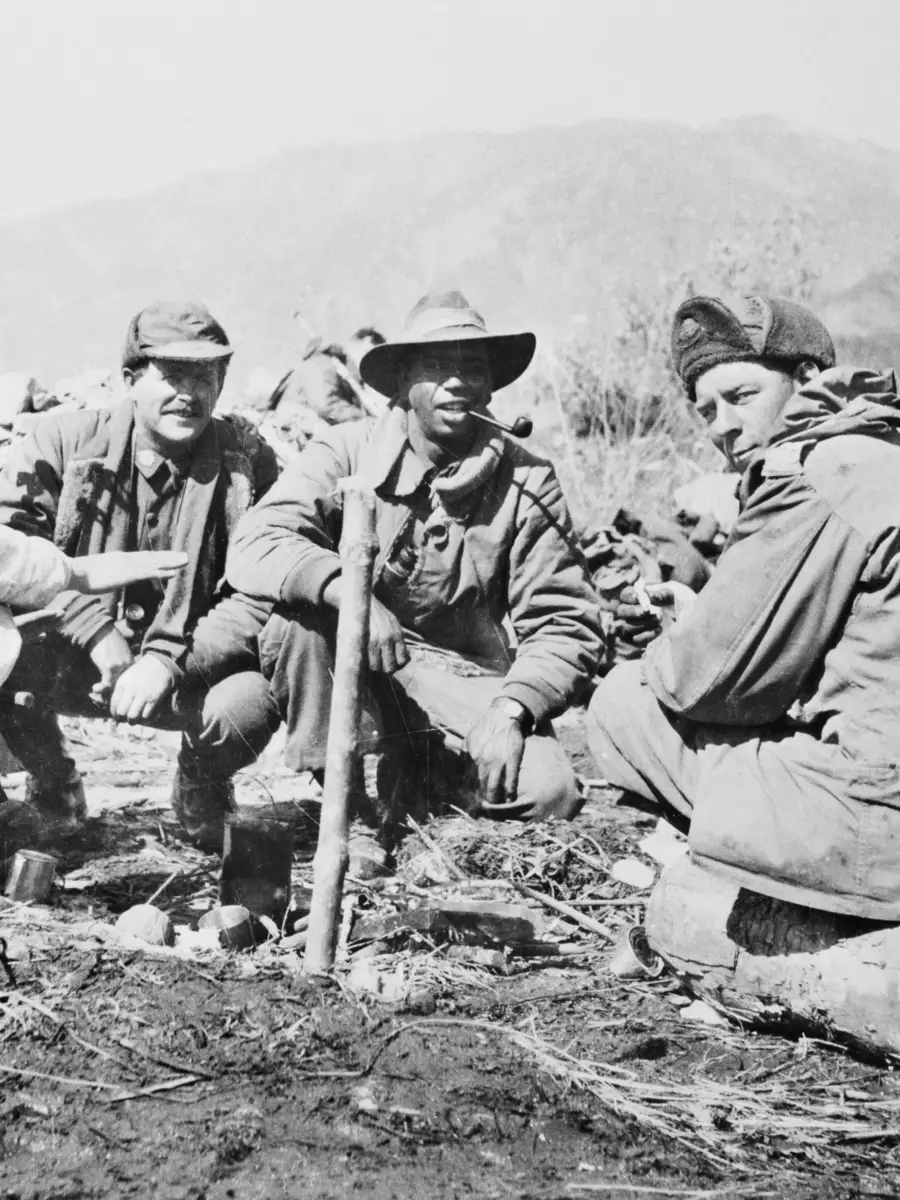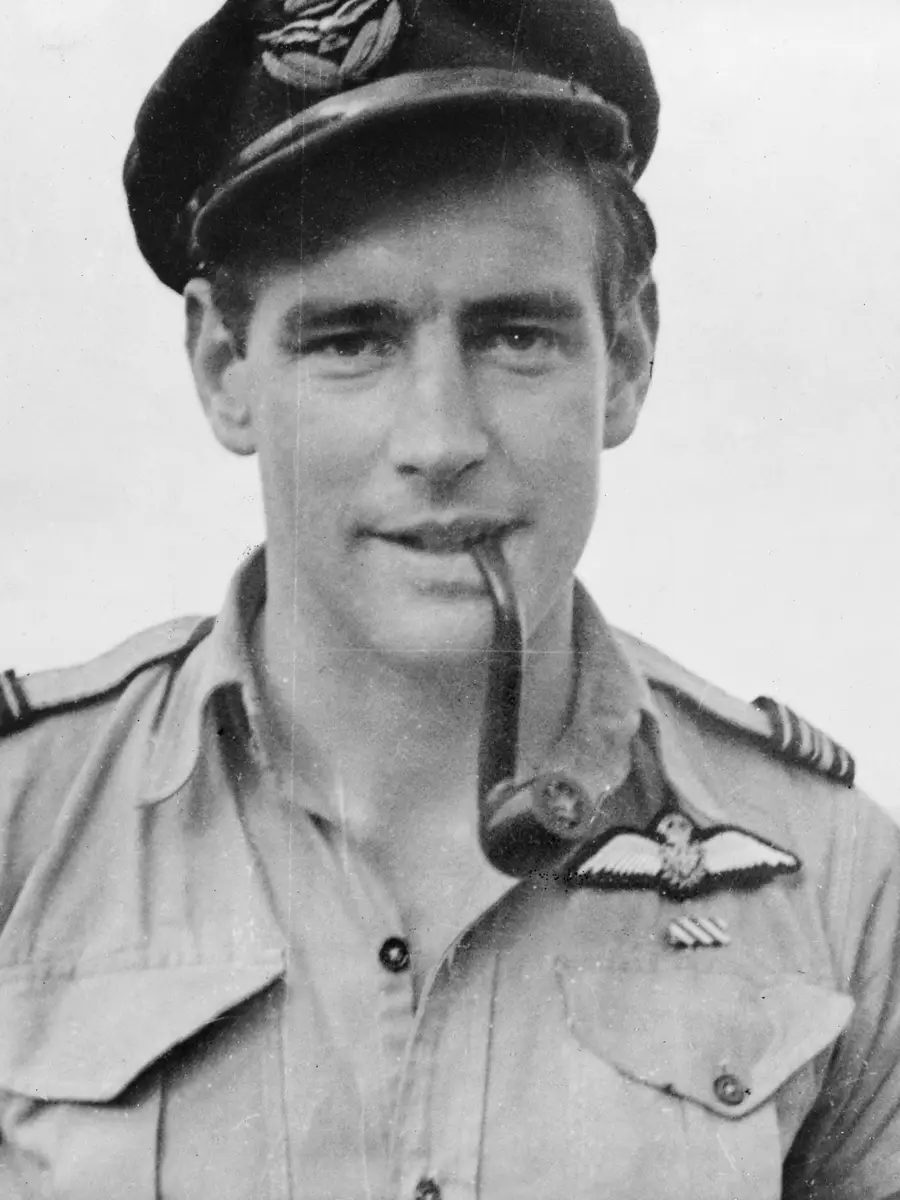When the three squadrons of the 49th Fighter Group of the US Army Air Force arrived in Australia in early 1942, they each sought a unique identity to show their pride and elite status as fighter units.
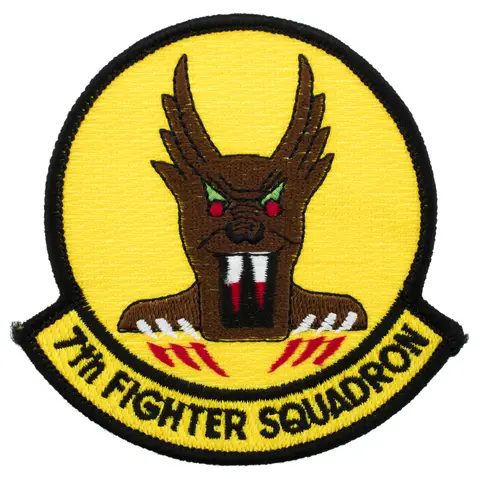
Flight suit patch, 7th Fighter Squadron, United States Air Force. The unit sought the most fearsome Australian animal to be their unit mascot and upon asking some local members of the Aboriginal community they learnt of the fearsome mythological bunyip. AWM2016.345.2
While two squadrons chose the titles Flying Knights and The Black Sheep, the 7th Squadron followed a different path.
They specifically sought to recognise the support they were receiving from the local Northern Territory Aboriginal community in locating and rescuing their downed pilots.
On 15 June 1942 the aircraft of 2nd Lieutenant Clarence T. Johnson, 7th Squadron, was damaged in combat over the sea. Running out of fuel, he parachuted into the area south-west of Darwin and was lost for five days until he was found by an Aboriginal search party.
After consulting the local Aboriginal community for their advice about the most ferocious Australian creature, the 7th Squadron chose the bunyip – which the Americans often heard as “bunyaps”.
Working from descriptions of the mythological beast, they also incorporated the six .50-calibre machine-guns of their own P-40E Warhawks (known as the Kittyhawk in British Commonwealth service). The design features a truly terrifying openmouthed bunyip with bloodied teeth and six claws symbolising the aircraft’s “fifty cal” machine-guns.
The 7th Squadron officially adopted the title “Screamin’ demons” (and the bunyap) as their squadron title. The unit went on to serve with the newly formed United States Air Force in the Korean and Vietnam wars.
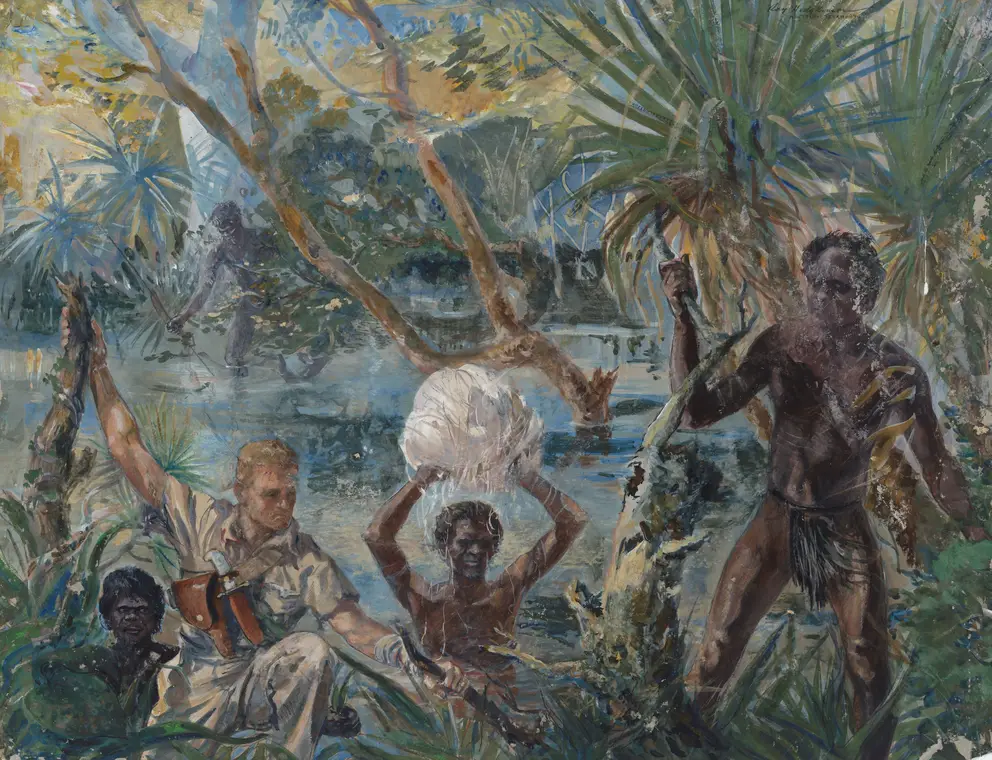
Roy Hodgkinson, Americans and Aborigines 1942. The painting depicts the story associated with the rescue of 2nd Lieutenant Clarence T Johnson, 7th Squadron, 49th Fighter group, USA.

A line up of four Curtiss P-40E Warhawk (aka Kittyhawk in British Commonwealth service) fighter aircraft of the 7th Squadron, United States Army Air Force (USAAF) 49th Fighter Group. Photographer: John McNeill
Today, the squadron is equipped with the supersonic jet trainer – the Northrop T-38 Talon – and still proudly call themselves the “Screamin’ demons”. A unit patch was featured in the Australian War Memorial’s Indigenous exhibition, For Country, for Nation, to represent this uniquely Australian–American wartime connection.
